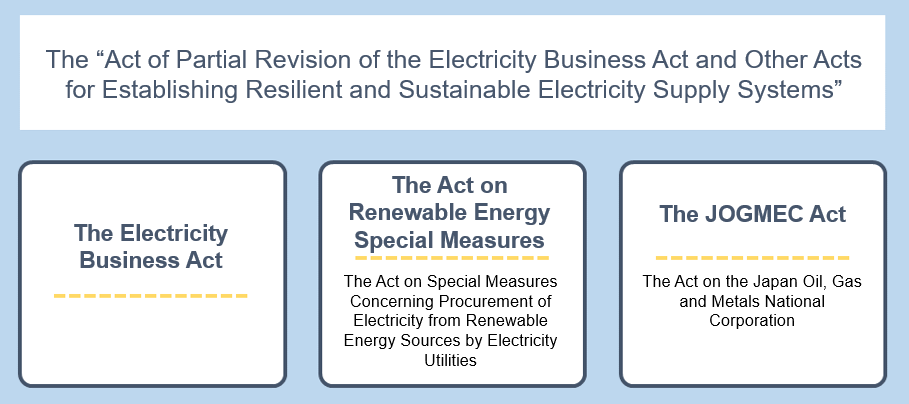Legislative measures to improve power system resilience
Objectives of the revision of the energy-related Acts
(in provisional translation)
(English ver.) 2020-10-07
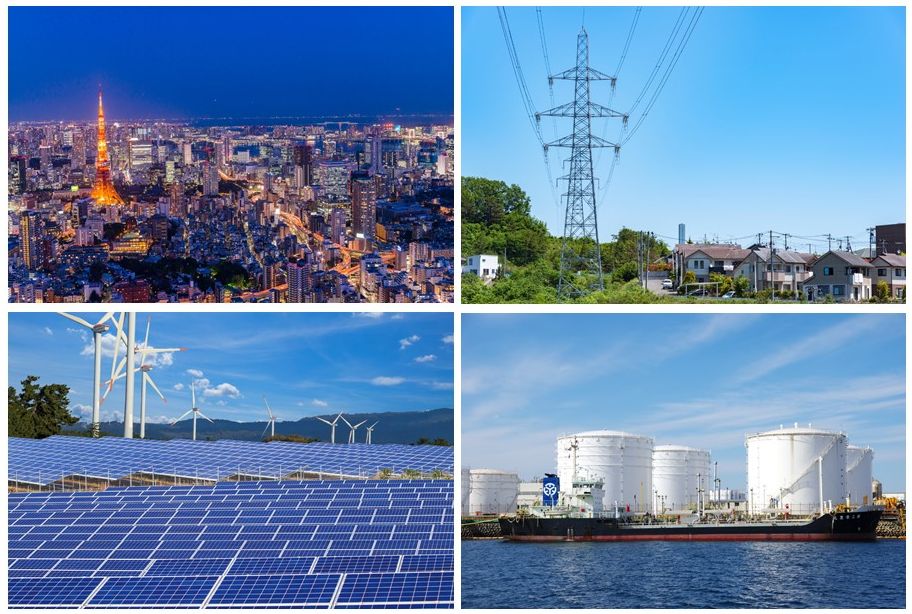
The power system infrastructure, in which electricity is generated by renewables and fossil fuels and supplied to ultimate users such as households and factories, is of critical importance to the economy as well as our daily lives. In recent years, a series of extreme natural disasters have threatened the power supply in Japan. Accordingly, it is becoming essential to establish a more disaster-resilient power system infrastructure. In order to support this, the “Act for Establishing Energy Supply Resilience” that stipulates the revisions to the relevant energy-related Acts passed the Diet in June, 2020. This article highlights the objectives of the revisions and presents salient points of each related Act.
The “Act for Establishing Energy Supply Resilience” for establishing resilient and sustainable electricity supply systems
The Act is officially named the “Act of Partial Revision of the Electricity Business Act and Other Acts for Establishing Resilient and Sustainable Electricity Supply Systems”.
It covers partial revisions of:
The “Electricity Business Act” which stipulates the rules on the electricity business;
The “Act on Special Measures Concerning Procurement of Electricity from Renewable Energy Sources by Electricity Utilities” (“Act on Renewable Energy Special Measures”); and
The “Act on the Japan Oil, Gas and Metals National Corporation” (“JOGMEC Act”).
The Act on Renewable Energy Special Measures mandates that utilities purchase electricity generated by renewables at pre-determined prices. The Act is also referred to as the “FIT Act” because it is the basis for the Feed-In Tariff scheme. The JOGMEC Act stipulates the roles played by the JOGMEC, which is responsible for overseas resource development, as well as the scope of its business.
The background of the revisions made to the three Acts simultaneously is that Japan’s power system infrastructure is facing the three challenges described below.
Three challenges that Japan’s power system infrastructure is facing
Natural disasters
In recent years, extreme natural disasters have impacted wider areas of Japan. Notable examples of disasters that damaged the power system infrastructure are the 2018 Hokkaido Eastern Iburi Earthquake, which caused a large-scale blackout across the entire Hokkaido area, and 2019 Typhoons Nos. 15 and 19, which caused power supply interruptions for long periods.

(Photograph left) A fallen utility pole
(Photograph right) A typhoon knocked over a house and a utility pole
Considering that large-scale natural disasters may occur in the future, the immediate construction of a disaster-resilient power system infrastructure is necessary.
Making renewable energy a primary source of power
The “5th Strategic Energy plan”, which was approved in 2018 as a guideline for Japan’s energy policy, set out a plan for making renewable energy a major power source.
Renewable energy contributes to not only reducing CO2 emissions but also raising Japan’s energy self-sufficiency ratio. It also enhances distributed energy systems in which power production facilities are constructed distant to each other while maintaining coordination. Distributed energy systems are considered to be disaster-resilient and therefore the mass introduction of renewable energy is considered necessary for building a resilient power supply structure.
However, renewable energy in Japan is facing challenges such as high costs, power market integration, business discipline, grid constraints and unstable generation.
1) Cost reduction
Under the FIT scheme, part of the cost incurred by utilities purchasing electricity generated by renewables is passed on to the general public in their electricity bills, which include the renewable energy surcharge. Power generation using renewables remains so expensive that the burden on the general public may become greater than originally expected. Therefore, cost reduction is an urgent necessity.
2) Power market integration
The power system requires maintaining a balance of supply and demand at all times. Otherwise, the system becomes unstable and may ultimately cause power supply interruptions. Therefore, utilities are required to supply an adequate amount of electricity to the market in line with the supply and demand situation.
On the other hand, the FIT scheme was formulated for the sole purpose of increasing power generation by renewables. Therefore, under the FIT scheme, utilities are required to purchase electricity generated by renewables at a fixed price regardless of the market situation. In order for renewable energy to become a major source of power, it needs to be integrated into the electricity market, and doing so requires fluctuating its output in line with the supply/demand situation as with other power sources.
Power supply and demand (balanced situation)
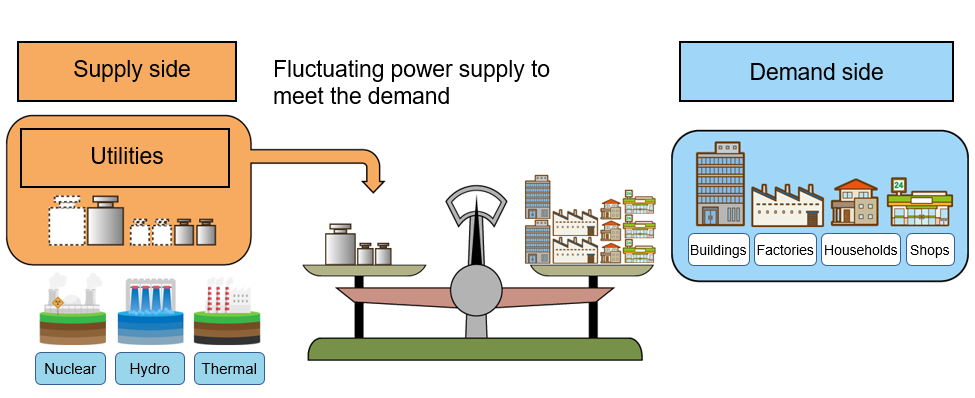
Power supply and demand (when demand exceeds supply)
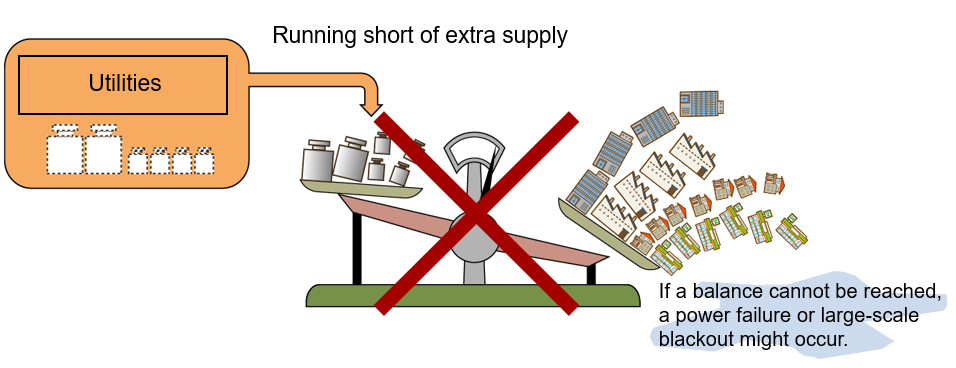
(Source) Prepared by the Agency of Natural Resources and Energy based on the reference material published by the Headquarters for Urgent Responses to Electricity Supply and Demand (March 25, 2011).
3) Business discipline
Renewable energy power generation facilities, which are built in a variety of areas, need to ensure safety and harmonize with the local communities. For instance, proper disposal of generation equipment and facilities upon the expiry of the business must be ensured. Furthermore, risks to the facilities posed by natural disasters must be taken into account in advance.
4) Grid constraints
Due to the limited capacity of power grids, there are some cases where electricity generated by renewables cannot be supplied to the transmission lines. These difficulties are referred to as “grid constraints”. In order to overcome the constraints, it is necessary to both reinforce the transmission lines and to use the existing lines more efficiently.
5) Instability
Renewables are natural sources of energy, and the amount of electricity generated by renewables is therefore unstable. If surplus electricity can be transmitted to other areas with electricity shortages, it will contribute to adjusting the supply to meet the demand. In order to realise electricity procurement involving multiple areas, inter-regional transmission lines need to be reinforced.
Geopolitical risks
“Geopolitical risks” are risks that result from political and social unrest in specific regions.
Japan, being a country that lacks resources, depends on imports from overseas for its energy demand. For its oil demand in particular, Japan is heavily reliant on the imports from the Middle East. However, the situation in the Middle East is increasingly unstable due to geopolitical risks. In June, 2019, crude oil carriers, one of which was owned by a Japanese shipping company, were attacked while sailing in the Gulf of Oman near the Strait of Hormuz.
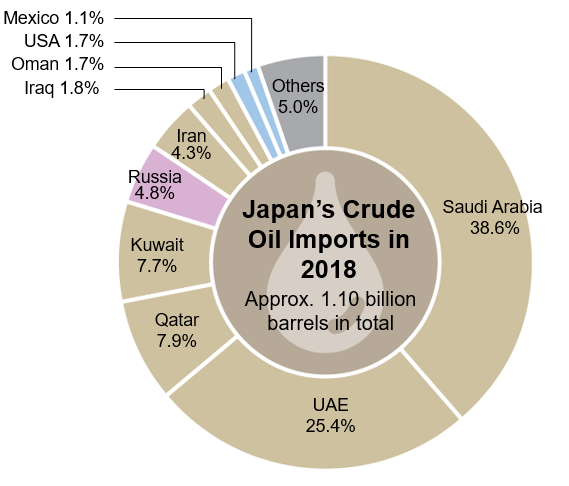
In the meantime, the international energy situation is changing dramatically. Energy consumption in emerging nations such as China is increasing in line with the growth of their economies. On the other hand, the supply side has also gone through a substantial change since the “Shale Revolution” in the latter half of 2000-2010, which turned the United States into the world’s largest oil producer. These changes have reshaped the energy supply/demand structure in the world.
Geopolitical risks impact the energy supply network which forms the foundation of power generation. Efforts must be made to build a more resilient energy supply network with those changes taken into account.
Against this backdrop, the three Acts concerning electricity business, renewable energy and resource development were revised, aiming to address challenges toward building a more resilient and sustainable power supply structure.
Division in charge
About Special Contents
Research and Public Relations Office, Policy Planning and Coordination Division, Commissionerʼs Secretariat
![]() The original Japanese text of this article; Click here
The original Japanese text of this article; Click here
